As you walk around your property, you notice that the retaining wall is bowing. Now, you’re wondering what could be the best solution to fix it. We researched this concern for your convenience and here’s the answer we found.
Bowing concrete walls often need the installation of wall anchors and plates to straighten them. On the other hand, retaining walls made of stone may require disassembly and reassembly to restore the structure.
So continue reading as we talk about these processes in greater detail. We'll also tackle other relevant pieces of information, such as the typical costs that come with repairing a retaining wall.
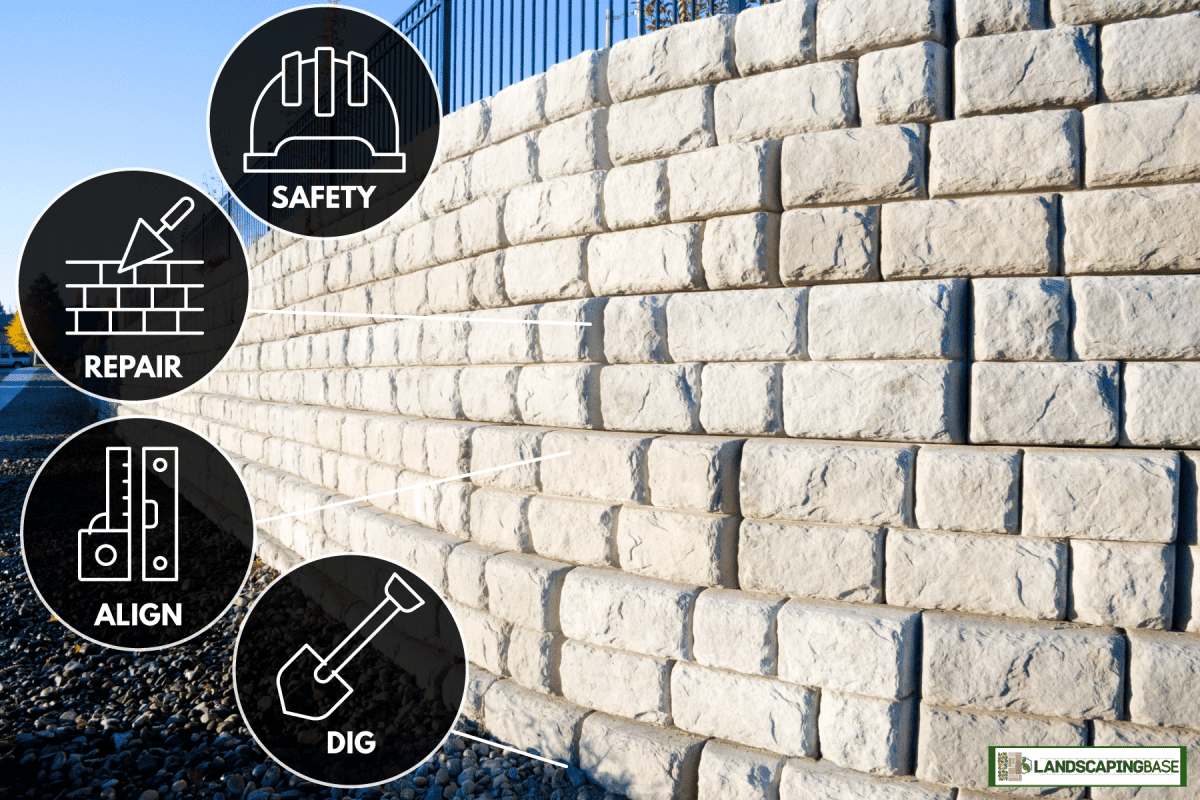
Fixing A Bowing Retaining Wall
In this section, you’ll learn the general procedures on how to repair a retaining wall based on its material:
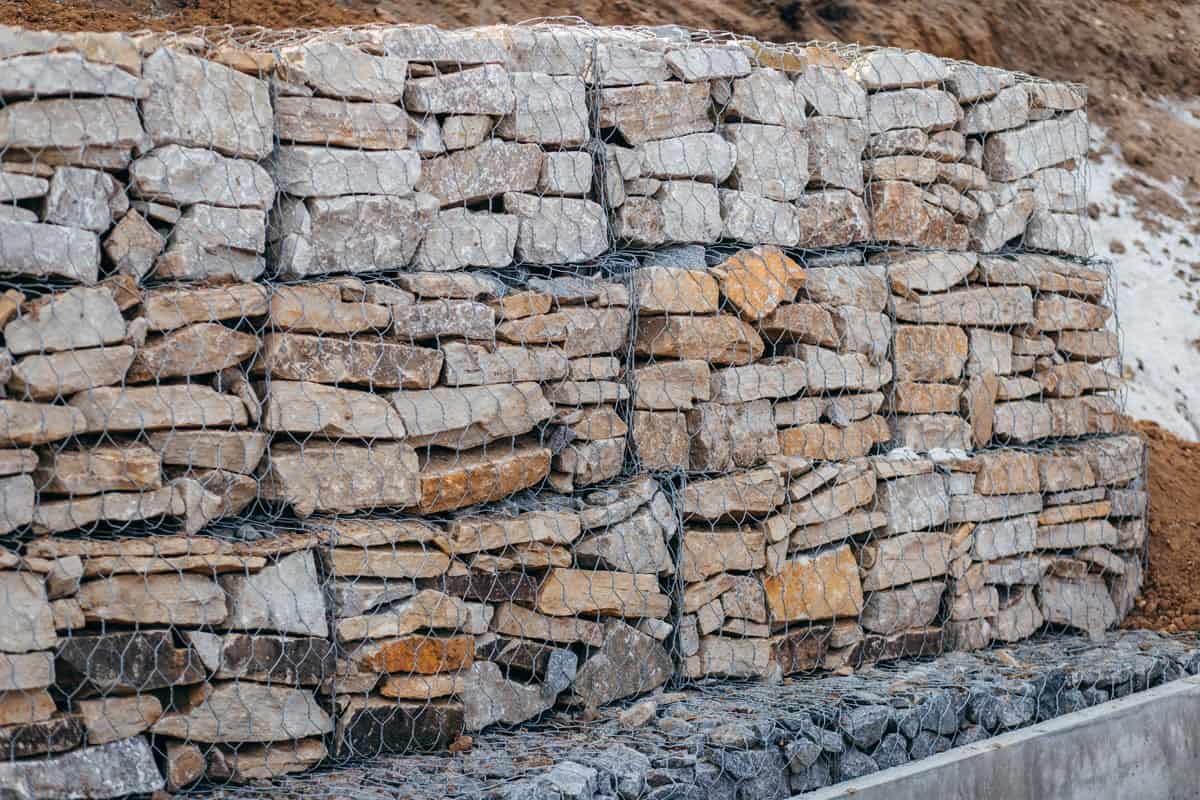
Concrete Retaining Wall
Repairing a bowing concrete retaining wall often doesn't require disassembly and reassembly. You might only need a few pieces of equipment for these projects, along with following these steps:
What You’ll Need
- Shovel
- Power drill
- Retaining wall anchors and plates
Step-by-Step Guide
- Dig a reasonably deep trench beside the retaining wall.
- Drill a hole through the wall in strategic locations for the retaining wall anchors and plates.
- Install the retaining wall anchors and plates and make sure they’re secure.
- Cover the trench with soil.
Check out these retaining wall anchors on Amazon.
You can also watch this short clip for a different perspective on how to complete this project:
Stone Retaining Wall
Bowing stone retaining walls are often more laborious to repair than their concrete counterparts. It’s because installing plates and wall anchors into the stone structure might not help restore its straightness. Instead, you might need to disassemble and reassemble the wall to straighten it.
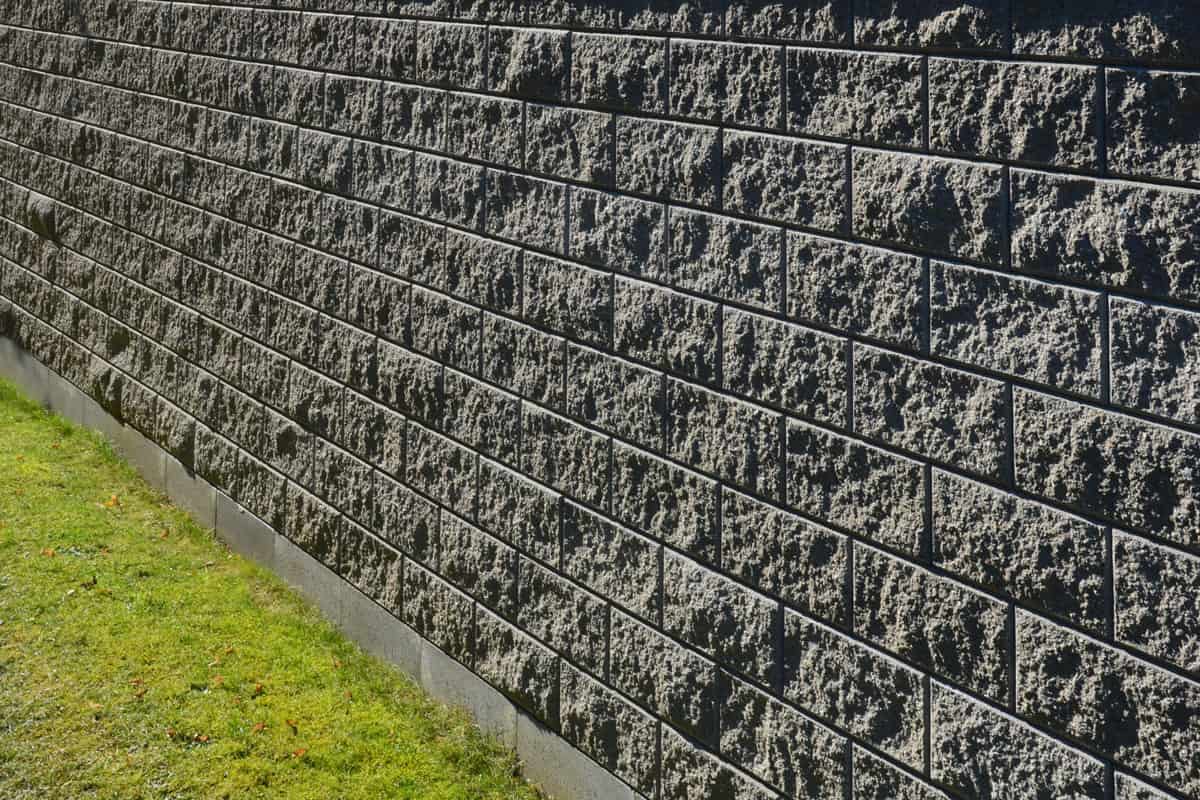
Take note that it might not only be a relatively straightforward disassembly-and-reassembly job. So here’s a look at the steps for this operation and help provide insight into it:
What You’ll Need
- Chisel
- Sledgehammer
- Shovel
- Mason’s trowel
- Power drill or punch drill
- Mortar
- PVC pipes
Step-by-Step Guide
Step #1: Disassembly
First, take a picture of the stone retaining wall with your smartphone or standalone camera. The captured image should help you with the reassembly.
If the stone structure has mortar, focus on using a chisel and sledgehammer to break this mixture. Make sure you’re breaking the stone and mortar pieces on the bowing areas.
On the other hand, if the retaining wall has stacked stones without mortar, remove the bowed stone pieces carefully. Then, set them aside for reassembly later.
Step #2: Remove The Eroded Soil
Take note that the bowing of retaining walls often occurs because of soil erosion. So dig out the eroded soil with a shovel after removing the stone wall’s bowed portion.
Step #3: Reassembly
If you still have the original stones from the structure, stack them again to create the retaining wall. Make sure to pay attention to their alignment. However, it can be ideal to apply mortar on the fixture to help prevent bowing.
To apply mortar, mix the product according to the manufacturer’s guidelines. Next, use a mason's trowel to apply and spread the mortar on the top and bottom areas of each stone layer. Also, ensure that you pack the mortar into each joint to create a proper seal.
Allow the mortar to dry before continuing. Keep in mind that it’ll take about 28 days for the product to cure. But you can proceed with the reassembly after the first 24 hours of application.
With the mortar considerably dry, use a power drill and create holes into the stone retaining wall. The holes should be in strategic locations and are quite far from each other.
Then, insert PVC pipes with appropriate dimensions into these holes. These setups will help drain the excess water from the adjacent soil, reducing the risks of hydraulic pressure and bowing. Once finished, return the removed soil to its original location.
Check out this stone repair solution on Amazon.
You can also watch the video below for a visual guide on a stone retaining wall’s restoration process:
It’s still important to mention that fixing the bowing from a retaining wall doesn’t guarantee that this issue won’t resurface. Storms and other serious natural calamities may still have the force needed to bow and/or ruin the structure.
What Are The Reasons Retaining Walls Fail?
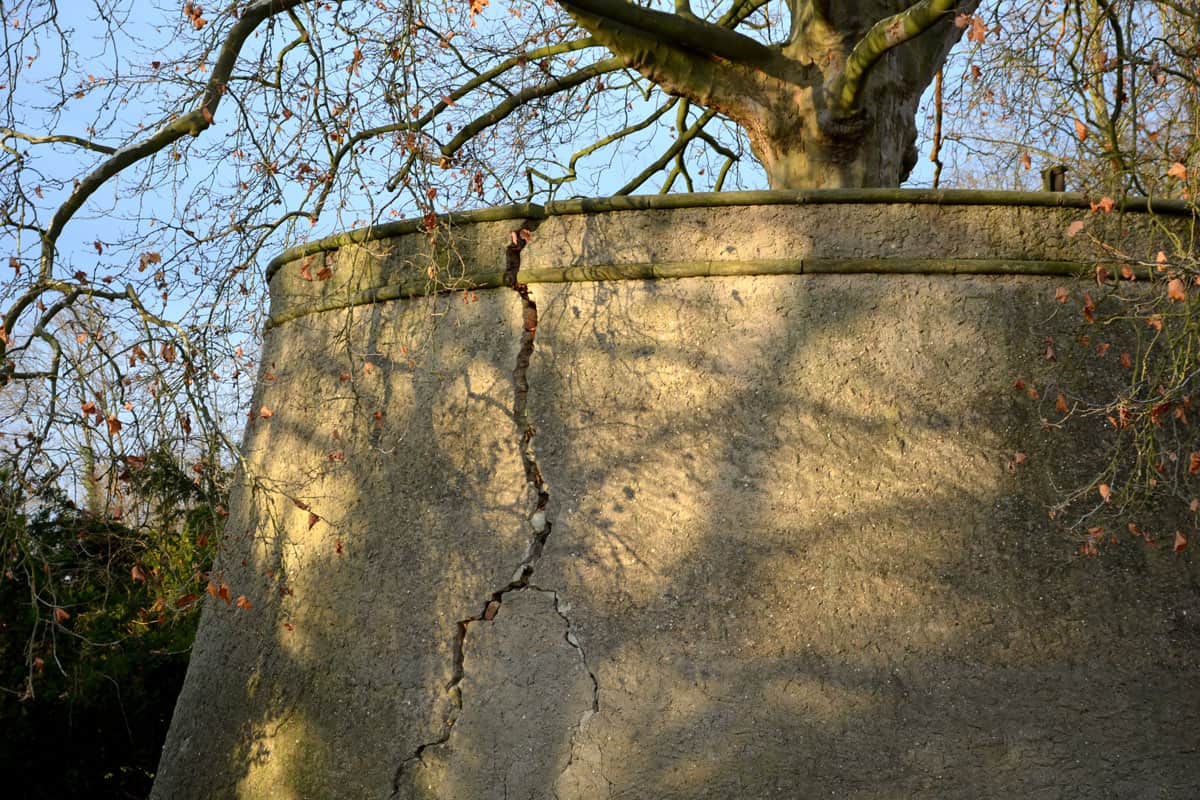
Aside from erosions, retaining walls can fail because of other reasons that may include:
Foundation Problems
Like other structures within the property, the retaining wall should be standing on a stable foundation. But issues like the foundation settling can decrease the wall’s strength, causing the structure to fail.
Repairing the source of the foundation problem should be a priority. That way, the retaining wall won’t be at risk of harm because of the earth underneath it.
Poor Drainage
An increase in moisture saturation to the soil adjacent to the retaining wall could lead to the fixture failing or even breaking down. If left unchecked, pressure will typically build up from the additional moisture. This extra weight can put unwanted stress on the retaining wall.
Fortunately, different methods are available. One example would be to install pipes in the wall, as mentioned previously. Another solution is to use crushed gravel for the wall as this material is reasonably porous to allow water to seep through it.
Check out this crushed gravel on Amazon.
Bad Weather
Frequent storms and other harsh weather can wear down retaining walls faster than usual. So properties in cities like Fort Myers, Florida, Mobile, Alabama, and Lake Charles, Louisiana, might find their retaining walls to have shorter lifespans than other residences in other locales.
Substantial fortification might be a requirement for retaining walls to remain standing after being subject to strong weather. You can watch the video below for a possible solution that may help strengthen this structure:
Poor Construction
Take note that improper assembly and installation can increase the risk of the retaining wall failing, regardless of its primary material. So take the time to follow proper sealing techniques and use the correct securing methods for the structure.
Otherwise, expect to pay expensive repair and/or replacement costs to restore and improve a damaged retaining wall.
How Much Does It Cost To Fix A Retaining Wall?
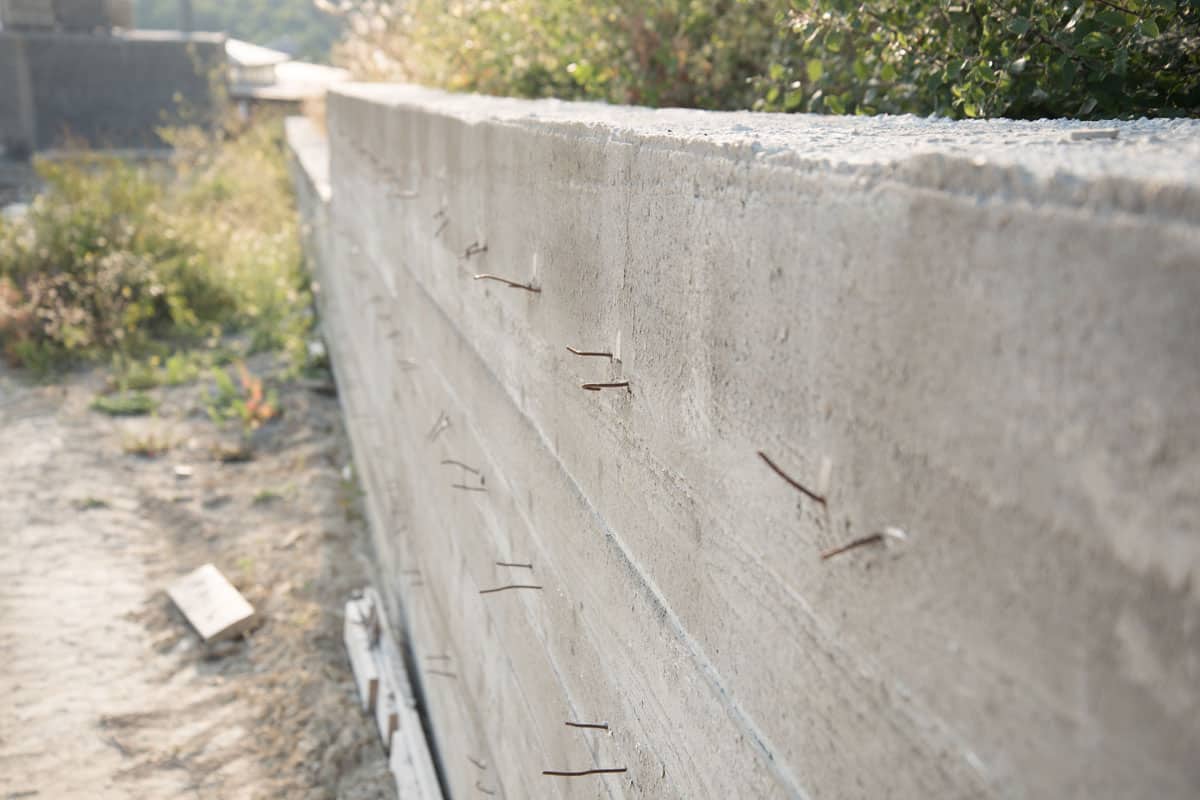
Prepare to spend about $600 on average to repair a retaining wall. Take note that the expenses might be as low as $100. However, you may also need to pay approximately $5,000 to complete extensive repair jobs.
Plus, the overhead may differ depending on the structure’s material. For example, fixing a concrete retaining wall often has an expense range of $200 to $1,000. But repairing a retaining wall made of stone usually costs $50 to $500 more than restoring one constructed out of concrete.
Other factors that can affect the costs of fixing a retaining wall are:
- Type of damage
- Solution to use
- Professional services
- Location of the property
Final Words
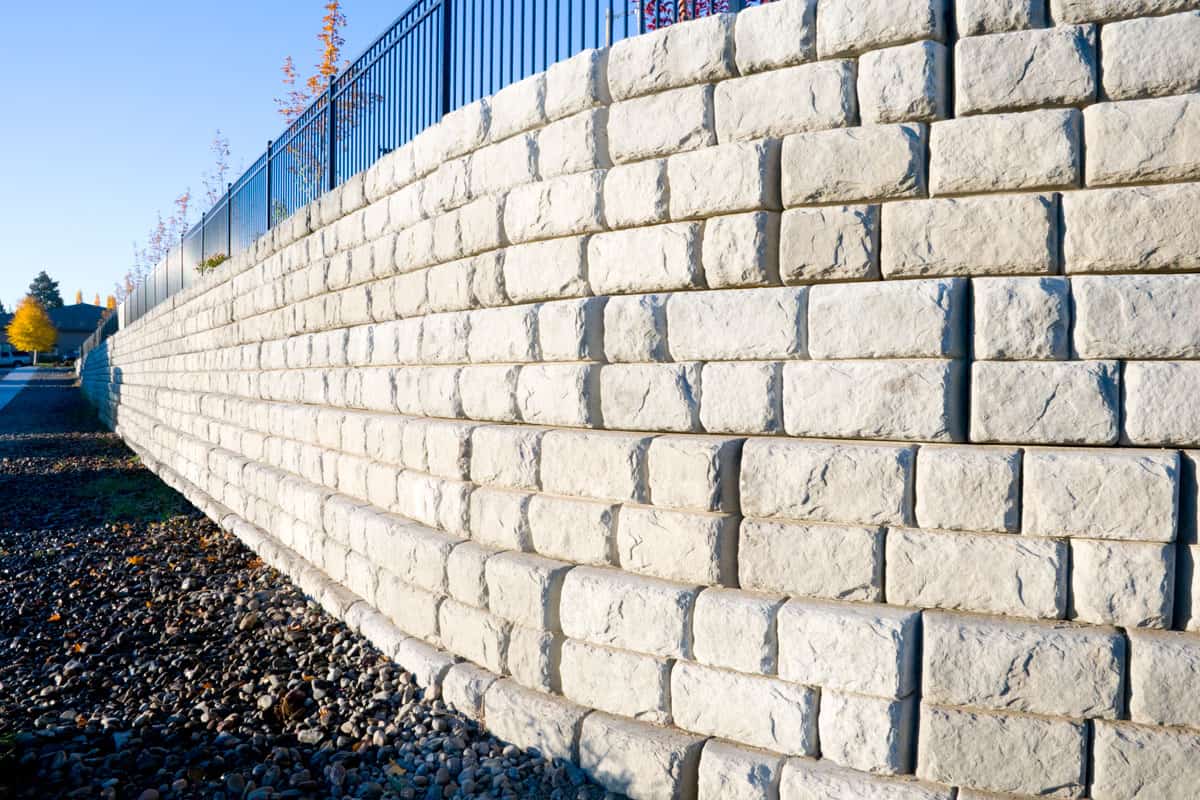
Fixing a bowing retaining wall often begins by identifying the material used in the structure. Then, use the appropriate method to fix the bowed areas. But be wary as you might need to disassemble and reassemble the fixture to complete the repair job.
If you liked this post, don’t forget to check out these other great reads:




![A man using a portable vacuum to collect dead leaves, Will A Leaf Vacuum Pick Up Mulch? [Can It Remove Leaves From Mulch?]](https://landscapingbase.com/wp-content/uploads/2022/09/Man-using-a-portable-vacuum-to-collect-dead-leaves-600x400.jpg)

